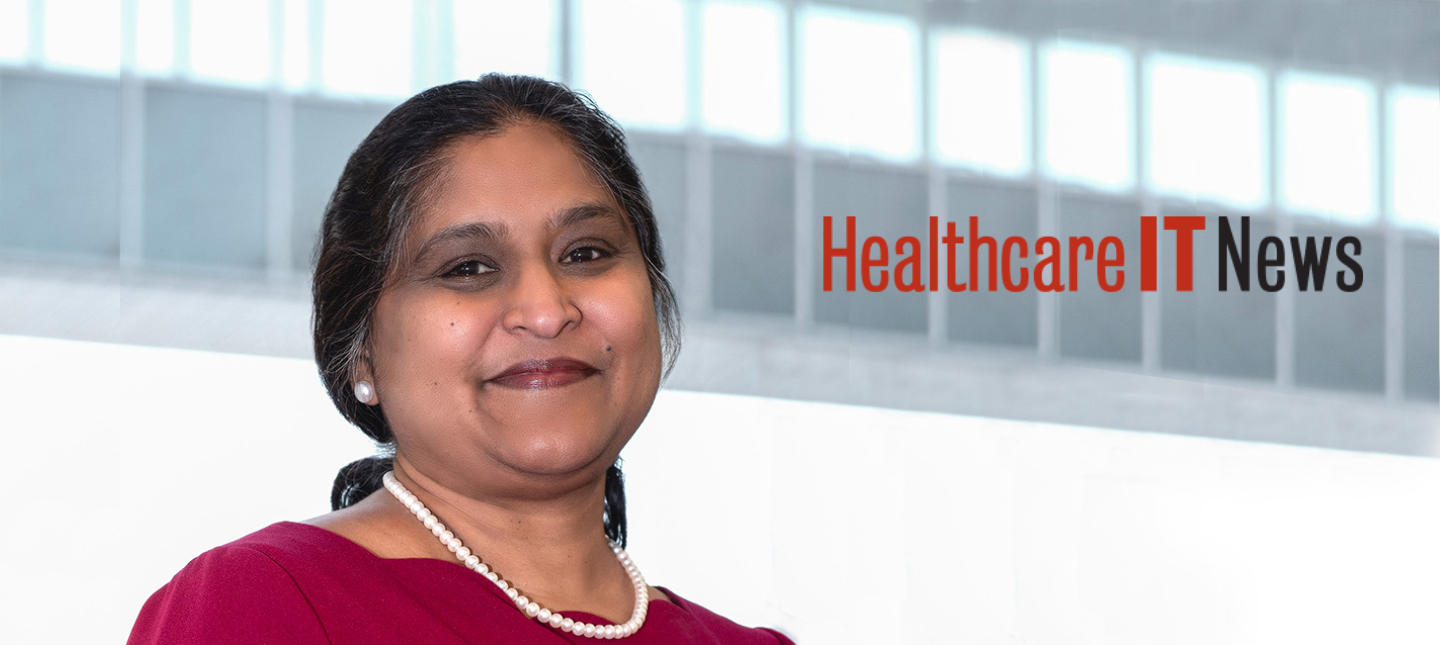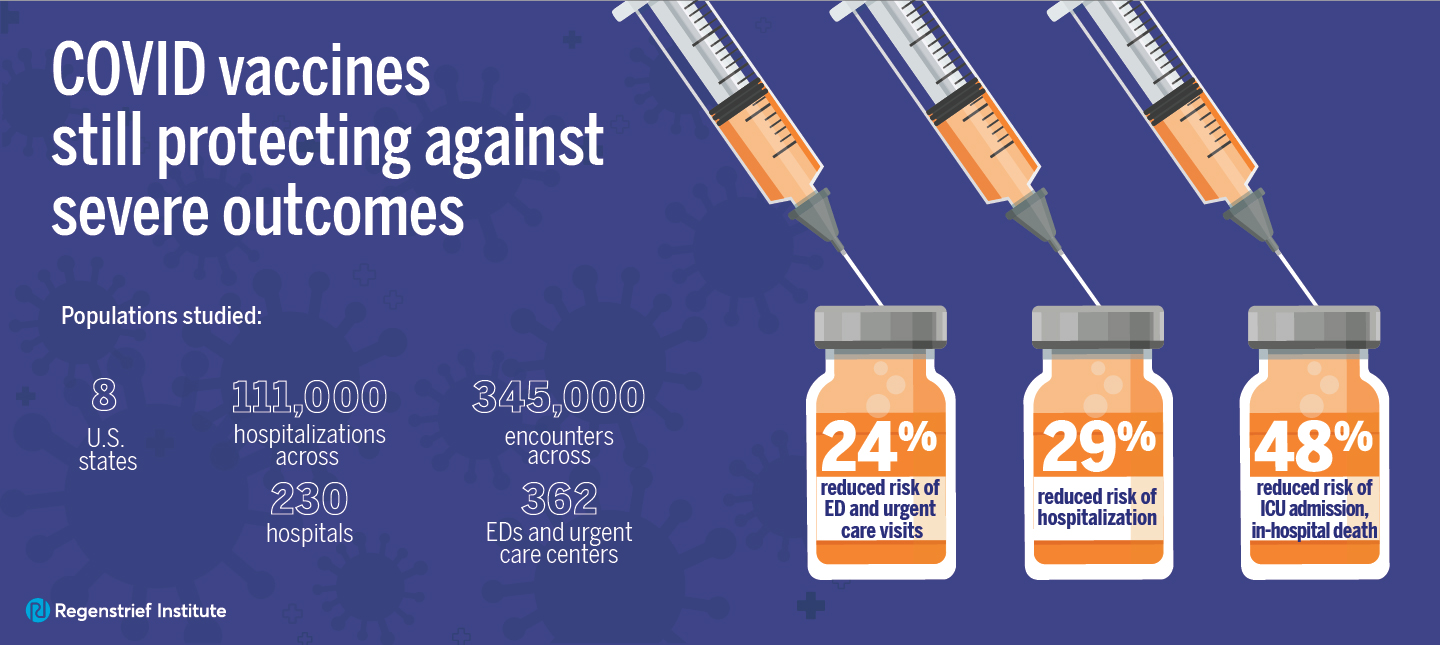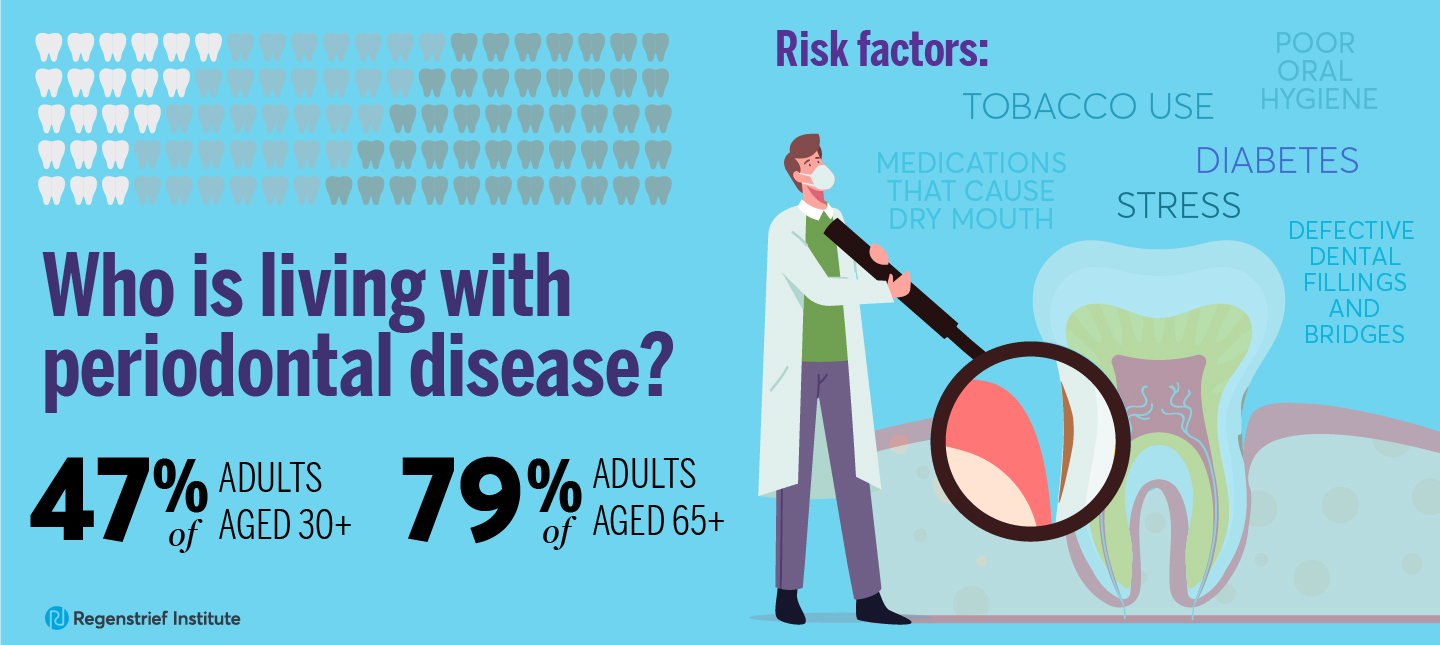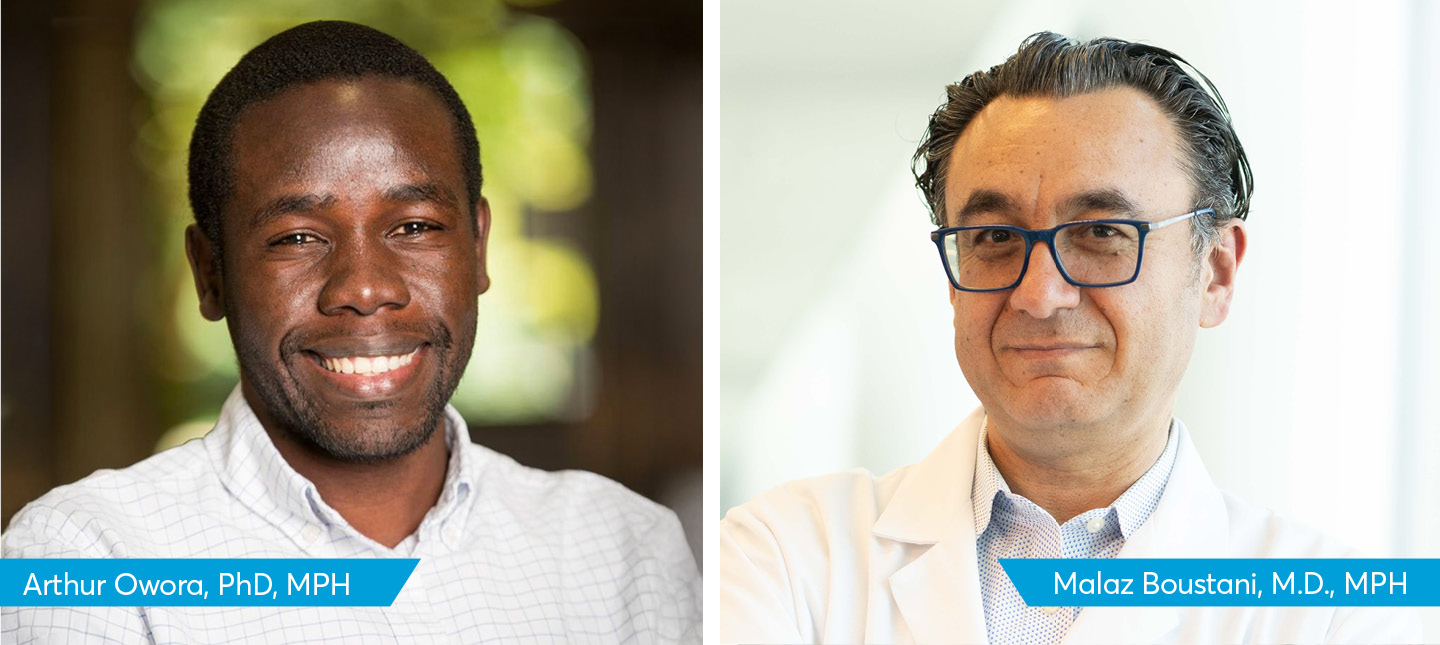Newly developed automated methodologies use routinely collected data
Periodontal disease is a growing public health issue in the United States as the nation’s population ages, yet it’s underdiagnosed and undertreated. According to the U.S. Centers for Disease Control and Prevention (CDC), 47 percent of adults aged 30 years and older and 79 percent of adults 65 years and older have some form of periodontal disease.
Researchers from Regenstrief Institute and Indiana University School of Dentistry have developed computer algorithms to track periodontal disease change, which could help dentists and periodontists follow disease progression. They also have developed tools to enable the use of electronic dental record data to automate diagnosis of the disease.
In the early stage of periodontal disease – gingivitis – gums are swollen, red and may bleed. In its more serious form, called periodontitis, the gums can pull away from the tooth, bone can be lost, and teeth may loosen or even fall out. Retention of natural teeth is important for good nutrition and other factors related to maintaining good health.
“Gum disease, which is typically underdiagnosed, is reversible if caught at an early stage before it has affected underlying structures and adversely impacted tooth support. Enabling dentists to track the disease using both the information in clinical notes and the periodontal charting data contained in a patient’s electronic dental record can enable diagnosis and hope,” said Thankam Thyvalikakath, DMD, MDS, PhD, who leads the Regenstrief Institute-IU School of Dentistry Dental Informatics Program. Adding that “we are here to develop and establish a culture of documenting and diagnosing cases in a structured manner as is done in medicine,” she notes that approximately 90 percent of dental practices in the U.S. use electronic dental records.
“I think the advantage of our approaches is that, using routinely collected data, we can automate and monitor gum disease treatments and changes that are visible only clinically, so we can catch gum disease at an early, potentially reversible, stage. This contrasts with other approaches that leverage only radiographs, which only show advanced gum disease.”
Factors increasing risk of periodontal disease include tobacco use, diabetes, poor oral hygiene, stress, defective dental fillings and bridges, as well as medications that cause dry mouth.
“There is a bidirectional relationship between certain risk factors and gum disease,” said Dr. Thyvalikakath. “For example, having diabetes increases risk of periodontal disease and having periodontal disease negatively affects the course of diabetes. A similar relationship exists between cardiovascular disease and periodontal disease. Recognizing, monitoring, and treating gum disease is an important part of overall patient health.”
“Developing Automated Computer Algorithms to Track Periodontal Disease Change from Longitudinal Electronic Dental Records” is published in a special issue, “Advances in Biomedical and Dental Diagnostics Using Artificial Intelligence,” of the peer-reviewed, open access journal Diagnostics.
Authors and their affiliations
Jay S. Patel1 2 3 , Krishna Kumar1, Ahad Zai1,4, Daniel Shin1, Lisa Willis1, and Thankam P. Thyvalikakath1,4.
1Dental Informatics Program, Department of Cariology Operative Dentistry and Dental Public Health, Indiana University School of Dentistry, Indianapolis, IN 46202, USA.
2Health Informatics, Department of Health Services Administrations and Policy, Temple University College of Public Health, Philadelphia, PA 19122, USA.
3Department of Oral Health Sciences, Temple University Kornberg School of Dentistry, Philadelphia, PA 19140, USA.
4Dental Informatics Program, Center for Biomedical Informatics, Regenstrief Institute, Indianapolis, IN 46202, USA.
2023 MedInfo presentation
“Feasibility of utilizing electronic dental record data and periodontitis case definition to automate diagnosis” was presented by Dr.Thyvalikakath at MedInfo 2023: the 19th World Congress on Medical and Health Informatics, held in Sydney, Australia. The paper is scheduled to be published in the meeting proceedings.
Thankam Thyvalikakath, DMD, MDS, PhD
In addition to her role as a research scientist with the Clem McDonald Center for Biomedical Informatics at Regenstrief Institute and director of the Regenstrief and IU School of Dentistry Dental Informatics Program, Thankam Thyvalikakath, DMD, MDS, PhD, is a professor and the associate dean of dental informatics and digital health at IU School of Dentistry and an adjunct professor in the IUPUI Luddy School of Informatics, Computing and Engineering.
About the Regenstrief-IU School of Dentistry Dental Informatics Program
Established in 2019, the Regenstrief Institute-IU School of Dentistry Dental Informatics Program is one of the first in the U.S. The program uses both electronic dental and medical record data for clinical research to develop interoperable databases and advance the knowledge of oral health problems that cause, co-occur with, or result from medical conditions. The goal is to implement findings into dental clinics and other points of care.
About Regenstrief Institute
Founded in 1969 in Indianapolis, the Regenstrief Institute is a local, national and global leader dedicated to a world where better information empowers people to end disease and realize true health. A key research partner to Indiana University, Regenstrief and its research scientists are responsible for a growing number of major healthcare innovations and studies. Examples range from the development of global health information technology standards that enable the use and interoperability of electronic health records to improving patient-physician communications, to creating models of care that inform practice and improve the lives of patients around the globe.
Sam Regenstrief, a nationally successful entrepreneur from Connersville, Indiana, founded the institute with the goal of making healthcare more efficient and accessible for everyone. His vision continues to guide the institute’s research mission.
About Indiana University School of Dentistry
The only dental school in the Hoosier state, Indiana University School of Dentistry (IUSD) offers an extraordinary learning environment in which teaching, research and community service come together in the best way possible for the preparation of tomorrow’s dental professionals. About 80 percent of the dentists practicing in the state of Indiana are alumni of the school.
Founded in 1879 in Indianapolis, IUSD is located on the health sciences campus of IUPUI, one of the outstanding urban universities in the United States with a recognized commitment to community engagement. IUSD capitalizes on the campus’s central location in the state and its position in the research corridor that links IUPUI, Purdue University West Lafayette, and Indiana University Bloomington. IUSD faculty conduct world-class interdisciplinary research in collaboration with the other IU health science schools and the Purdue Schools of Engineering and Technology and Science.









